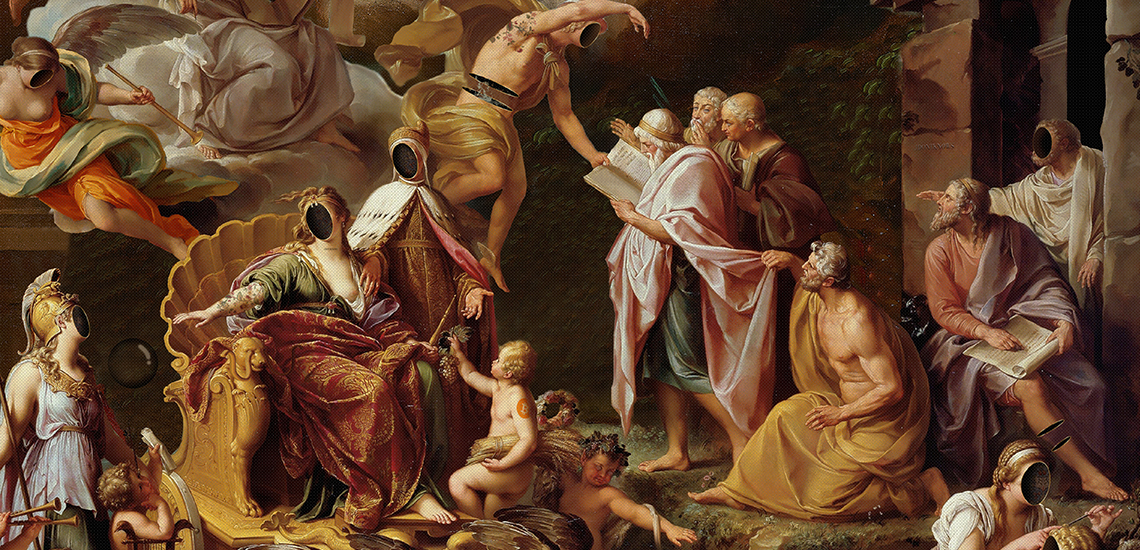Starting a Visual Journey Through the Lyrical Interpretations of Nature in Impressionist Landscapes
Each brushstroke, each play of light and darkness, and each color option in their jobs talks quantities regarding the musicians' deep connection to nature and their ability to equate its elegance onto the canvas. As we explore the lyrical interpretations of nature in Impressionist landscapes, we are welcomed to immerse ourselves in a globe where reality and emotion link, providing a glance right into the musicians' profound recognition for the all-natural globe.
The Exciting Brushstrokes of Claude Monet
Claude Monet's proficiency of brushstrokes transcends simple strategy, imbuing his landscapes with a heavenly quality that mesmerizes and mesmerizes audiences - trump art. His innovative usage of color and light, combined with his unique brushwork, develops a sense of movement and life within his paintings. Monet's popular series of works showing water lilies and his legendary haystacks showcase his capability to catch the short lived effects of light and atmosphere

Embracing Light and Darkness With Camille Pissarro
Symbolizing a similar reverence for the interaction of light and darkness, Camille Pissarro's imaginative vision unravels as a harmonious exploration of the all-natural world's luminescent nuances. Pissarro, a vital figure in the Impressionist activity, masterfully captured the dynamic connection in between light and darkness in his landscapes. His skilled use shade and brushwork permitted him to share the subtle shifts in light that specify different times of day and seasons.
Pissarro's paints frequently feature dappled sunshine filtering system via leaves, casting detailed patterns of light and shadow on the earth below. In works such as "Hoar Frost, the Effect of Snow, Pontoise," Pissarro skillfully illustrates the crisp illumination of wintertime sunshine juxtaposed with the cool darkness that define the snowy landscape. By embracing both light and shadow in his structures, Pissarro invites viewers to immerse themselves in the natural appeal and short-term effects of light worldwide around them.

Through Pissarro's works, we are reminded of the transformative power of light and darkness, welcoming us to stop and value the short lived minutes of beauty present in the day-to-day landscapes that border us.
A Symphony of Colors by Edgar Degas
Edgar Degas coordinates a dynamic symphony of shades in his masterful artworks, infusing his make-ups with a vibrant interaction of colors that astound the viewer's look. Recognized primarily for his ballet dancers and intimate scenes of Parisian life, Degas skillfully adjusted colors to convey mood and activity in his paints. trump art. His usage of vibrant, contrasting shades and refined tonal variations developed a sense of deepness and vibrancy within his jobs
Degas' color scheme useful reference usually included rich blues, deep environment-friendlies, and cozy oranges, which he used with positive brushstrokes to record the essence of his topics. Whether representing a ballerina mid-performance or a group of pals conversing at a coffee shop, Degas' colors not just illustrated the scene but also evoked a feeling of feeling and power.
Furthermore, Degas' testing with light and darkness included an added layer of intricacy to his color structures, boosting the general atmosphere of his paintings (trump art). Via his experienced manipulation of color, Degas created a visual harmony that proceeds to resonate with visitors today
Checking out Nature's Serenity With Berthe Morisot
Berthe Morisot's artistic vision provides a peaceful departure from the dynamic color harmonies of Edgar Degas, as she captures the harmony of nature in her expressive landscapes. Known for her fragile brushwork and intimate representations of day-to-day life, Morisot's landscapes emanate a sense of tranquility and harmony.
Morisot's paintings frequently include soft, muted tones that communicate a feeling of calmness and serenity. Her jobs, such as "The Cradle" and "Summer's Day," display her ability to catch the refined beauty of nature YOURURL.com in a manner that is both soothing and contemplative to the visitor.
Unlike some of her Impressionist equivalents who focused on strong colors and dynamic structures, Morisot chose to produce gentle, reflective scenes that invite the viewer to mirror and pause. With her masterful use light and darkness, Morisot develops a feeling of tranquility that resonates with the customer on a deep psychological degree.
The Psychological Landscapes of Vincent Van Gogh
Vincent Van Gogh's landscapes strongly share a depth of emotion through their dynamic brushwork and expressive use of color. The Dutch post-impressionist artist is renowned for his capacity to record raw and extreme emotions in his paintings, transcending conventional depictions of nature. Van Gogh's turbulent individual life, marked by mental health struggles, considerably affected his art, instilling his landscapes with a feeling of unease, sorrowful, or liveliness.
In jobs such as "Starry Night" and "Wheatfield with Crows," Van Gogh's swirling brushstrokes and vivid shade choices stimulate an extensive psychological feedback from audiences. The unstable skies and agitated landscapes in his paintings mirror his internal chaos and find more information emotional turbulence, welcoming visitors to explore the complexities of his psyche.
Van Gogh's unique aesthetic language, identified by exaggerated perspectives and bold use shade, produces landscapes that resonate with customers on a deeply emotional level. Via his art, Van Gogh welcomes us to see nature not equally as an exterior fact however as a mirror of our innermost feelings and feelings.
Final Thought
In conclusion, the impressionist landscapes of artists such as Claude Monet, Camille Pissarro, Edgar Degas, Berthe Morisot, and Vincent Van Gogh provide a distinct and captivating aesthetic analysis of nature. Through their usage of brushstrokes, light, color, and feeling, these artists have actually produced a symphony of photos that evoke a feeling of peacefulness and charm in the all-natural world. Their jobs continue to motivate and bewitch viewers with their lyrical analyses of the landscapes around us.
Each brushstroke, each play of light and shadow, and each color selection in their works speaks quantities regarding the musicians' deep connection to nature and their capability to convert its charm onto the canvas. His cutting-edge use of shade and light, incorporated with his distinctive brushwork, develops a sense of activity and life within his paints. His adept use of color and brushwork permitted him to share the refined shifts in light that specify various times of day and seasons.
